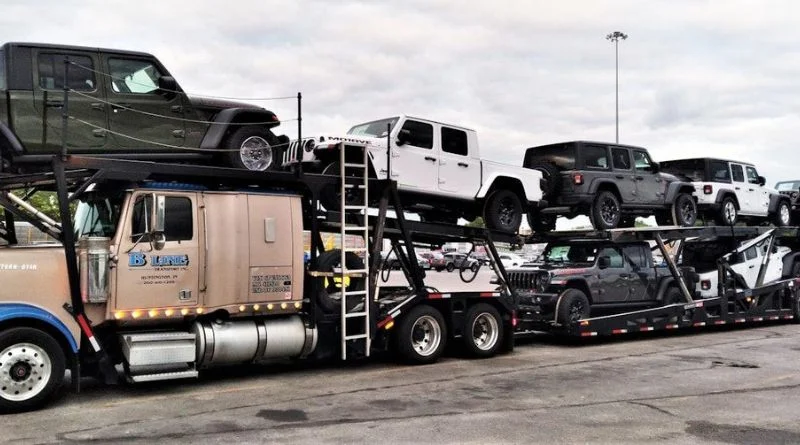How to choose a truck for a Car Hauling Business: A Step-by-Step Guide
Last updated on March 15th, 2024 at 04:39 am
You’re ready to start your auto transport business, but first you need wheels. The right truck is key for hauling cars cross-country or around town. We’ll walk through what to consider when choosing your workhorse rig to launch your car hauling venture on the open road. From bed length to engine power, we’ve got you covered on factors so you pick the perfect pair of shoes for your new trucking business. Let’s hit the highway and shift gears into entrepreneurship. This guide will steer you towards informed choices and driving your enterprise full speed ahead.
Understanding the Car Hauling Business
If you’re thinking of starting a car hauling business, the first thing you’ll need to consider is what kind of truck to buy. The type of truck you choose depends on what kinds of vehicles you want to transport. The needs for each niche are quite different. For passenger vehicles and light trucks, a multi-car carrier with ramps will work great. For high-end sports cars, an enclosed carrier is best to protect the vehicles. And for heavy equipment, you’ll need a much larger flatbed. Popular brands for car shipping business include Freightliner, Peterbilt, Kenworth, and Volvo. Consider things like engine power, fuel efficiency, and reliability. A medium-duty truck with a diesel engine is a common choice.
Key Factors to Consider When Choosing a Truck
1. Type of Cars You Want to Haul
The first thing you need to determine is what kind of vehicles you want to transport. Do you want to focus on hauling regular passenger cars and small trucks or larger commercial trucks and RVs? The type of cargo will determine what kind of truck you need. For example, a single car carrier with two levels can haul 6-8 regular vehicles whereas a multi-axle trailer is required for larger trucks and buses.
2. New or Used
Deciding between a new or used truck is an important consideration from a financial perspective. New trucks will generally be more expensive but come with warranties and the latest features. Used trucks have higher mileage but at a lower cost. For a new business, buying a used truck may be a good way to get started while you establish your operations. You can then upgrade to a new truck once the business is generating steady revenue.
3. Specifications
The specific details of the truck like make, model, year, mileage, engine power, and towing capacity should align with your business needs. For hauling vehicles, you’ll want a truck with a powerful engine, durable transmission, and high towing capacity. Check the gross vehicle weight rating to ensure any trailer is within the safe limits. Diesel engines are common for your vehicle transport business as they provide more power and better fuel efficiency. Do some research on Haulk.app to compare specs and costs to find a truck perfect for your needs.
4. Insurance and Registration
Don’t forget that you’ll need commercial truck insurance, proper business licensing, and commercial plate registration for any vehicle you purchase. Costs will vary in each state, so make sure you understand the requirements where you’ll be operating. Liability coverage is essential in case of any accidents or damage to the vehicles in transport.
Also Check:
What Is a USDOT Number and Why You Need for Car Hauling Business?
A USDOT number stands for United States Department of Transportation number. It is a unique identifier issued by the Federal Motor Carrier Safety Administration (FMCSA) to commercial motor carriers such as trucking companies, bus companies, and freight forwarders. If you’re starting an auto transport business, one of the first things you’ll need to do is obtain a USDOT number. This is required by the Federal Motor Carrier Safety Administration (FMCSA) for any commercial vehicle operating across state lines.
- It’s Required by Law
- It Helps Track Your Safety Record
- You’ll Need It for Permits and Licensing
- How to Apply for Your USDOT Number
A USDOT number is one of the essential registrations you need to legally and safely operate your car transport business. Take the time to understand the requirements and responsibilities that come with obtaining your USDOT number. It will set your business up for success from the start.
How to Get Your USDOT Number?
So, are you curious about how to find USDOT number? The process to get your USDOT number is pretty straightforward. You’ll start by registering your business and then filling out some paperwork with the FMCSA.
Here are the basic steps:
- Register your business. If you haven’t already, you’ll need to formally register your car hauling business as an LLC, corporation, or sole proprietorship. This establishes your business as a legal entity.
- Gather the required documents. You’ll need things like your business registration paperwork, personal ID, and proof of insurance for your commercial vehicles.
- Fill out the MCS-150 form. This is the official application for a USDOT number. You can find it on the FMCSA website and submit it online, by mail, or in person at an FMCSA office.
- Provide details about your vehicles and drivers. On the MCS-150, you’ll enter info like your truck VINs, vehicle types, and driver details. The FMCSA will check that everything is properly registered and insured.
- Pay the application fee. The fee for a USDOT number is currently $300. You can pay by credit/debit card, electronic check, money order, or certified/cashier’s check.
- Your USDOT number will be issued. Once the FMCSA reviews and approves your application, they’ll assign your new USDOT number. This typically takes around 3 business days if submitting online or 7-14 days if mailing in forms.
Conclusion
So there you have it – a step-by-step guide to choosing the right truck for your car carrier business. By taking the time to research your options, create a budget, and follow expert advice, you’ll end up with a reliable vehicle that meets your specific business needs. Choosing a truck is a big investment, but it’s one that will pay off as your auto transport company grows. Stick to this plan, and you’ll be hauling cars to customers in no time!




